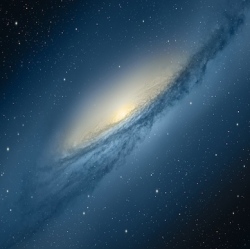
In doing so, they have identified six new galaxies of stars that formed just a few hundred million years after the Big Bang itself. The study also updates a distance estimate for a seventh galaxy, placing it further back in time than any object previously identified.
Called UDFj-39546284, this is seen when the cosmos was less than 3% of its current age. The new Hubble telescope investigation was led by Richard Ellis from the California Institute of Technology (Caltech) and colleagues at Edinburgh University, Jim Dunlop and Ross McLure.
Its significance is that it gives us the clearest insight into how some of the earliest years of cosmic history unfolded. The data supports the notion that the first galaxies assembled their constituent stars in a smooth fashion – not in some sudden burst.
"Of course, the most distant object is interesting, but it’s the census – the seven objects – that gives us the first indication of the population of objects in the heart of this… era," said Prof Ellis.
"If you compare the number of galaxies that we see to the abundance of objects once the Universe had expanded a little bit, we describe a very smooth decline in the number of objects as we go back into cosmic history," he told reporters.
The new results stem from a project called UDF12 and centre on a tiny patch of sky in the Constellation Fornax (The Furnace).
